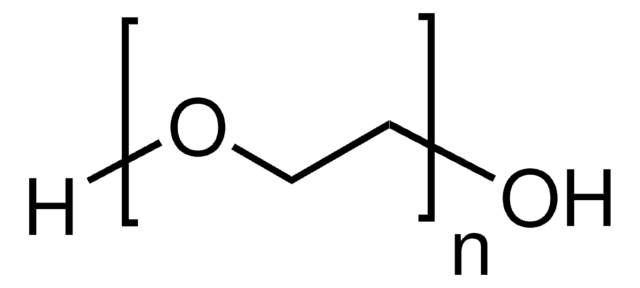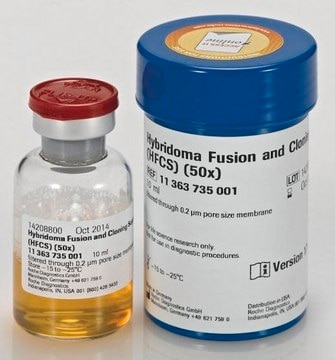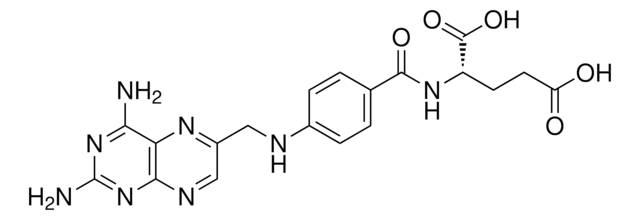P7306
Polyethylene glycol/ dimethyl sulfoxide solution
Hybri-Max™, average mol wt 1,450, 50 % (w/v), 0.2 μm filtered, BioReagent, suitable for hybridoma
Synonym(s):
PEG/DMSO Solution, Polyethylene Glycol Solution, Solution of PEG and DMSO
About This Item
Recommended Products
grade
Hybri-Max™
Quality Level
sterility
0.2 μm filtered
product line
BioReagent
form
solution
mol wt
average mol wt 1,450
concentration
50 % (w/v)
technique(s)
cell culture | hybridoma: suitable
impurities
endotoxin, tested
storage temp.
2-8°C
SMILES string
C(CO)O
InChI
1S/C2H6O2/c3-1-2-4/h3-4H,1-2H2
InChI key
LYCAIKOWRPUZTN-UHFFFAOYSA-N
Related Categories
Application
Recommended for use in a normal fusion protocol requiring 50% PEG and 10% DMSO.
Packaging
Other Notes
Reconstitution
Legal Information
WGK
WGK 1
Flash Point(F)
Not applicable
Flash Point(C)
Not applicable
Certificates of Analysis (COA)
Search for Certificates of Analysis (COA) by entering the products Lot/Batch Number. Lot and Batch Numbers can be found on a product’s label following the words ‘Lot’ or ‘Batch’.
Already Own This Product?
Find documentation for the products that you have recently purchased in the Document Library.
Customers Also Viewed
Our team of scientists has experience in all areas of research including Life Science, Material Science, Chemical Synthesis, Chromatography, Analytical and many others.
Contact Technical Service





